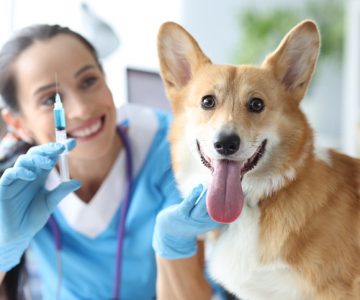How Can I Tell if My Pet is Sick?
Your pet can’t tell you outright when they’re not feeling well, so it’s crucial for pet parents to be vigilant. Recognizing the signs of illness can mean the difference between a minor issue and a serious health problem. It’s essential to observe your pet’s behavior and physical condition regularly so you can detect any unusual changes that might indicate a problem.
Behavioral Changes That Signal Sickness
Behavioral shifts can be some of the earliest indicators of illness in pets. It’s important to keep an eye out for unusual activities or behaviors that are out of the ordinary for your furry friend.
-
Lethargy or decreased activity
-
Sudden aggression or irritability
-
Changes in sleeping patterns
These sudden changes can often suggest that a visit to the vet is necessary. Refraining from their regular playtime or showing disinterest in activities they usually enjoy are telltale signs as well.
Physical Symptoms to Watch
The physical state of your pet is also a major indicator of their health. Keep an eye out for visible clues like:
-
Coughing, wheezing, or labored breathing
-
Unexpected weight loss or gain
-
Changes in appetite or drinking habits
These symptoms might not tell you exactly what’s wrong, but they certainly signal that something isn’t right. Continuous monitoring is important to decide whether these signs are persistent and serious enough to require professional attention.
Shifts in Eating and Drinking Habits
A change in appetite or water consumption can be a sign of various health issues. A decrease in appetite could indicate dental problems, while increased thirst could be a sign of diabetes or kidney disease.
Gastrointestinal Issues
Gastrointestinal distress isn’t just uncomfortable for your pet—it could also be a warning sign of illness. Look out for:
-
Vomiting
-
Diarrhea
-
Blood in stools
If these symptoms persist, they could be an indicator of infection, poisoning, or other serious conditions that require immediate veterinary care.
Unusual Vocalizations
Pets often express discomfort through vocalizations. A cat that meows incessantly or a dog that whines more than usual could be trying to tell you something important about their well-being.
Dermatological Signs That Should Not Be Ignored
The condition of your pet’s skin and coat is a telling indicator of their overall health. As a pet owner, noticing signs of discomfort or changes in the appearance of your pet’s skin and fur can be concerning. Indicators such as excessive scratching, hair loss, or red and irritated skin should not be dismissed as they could be symptomatic of underlying health issues like allergies, parasites, or infections.
Properly identifying and not overlooking these dermatological signs is crucial in providing your pet with timely care and relief. A vet visit is warranted when these signs are present, as they can assess, diagnose, and recommend a treatment plan to address your pet’s needs.
-
Excessive Scratching: Persistent scratching is a clear indicator that your pet is experiencing discomfort. This could be due to several factors, such as flea infestations, allergic reactions, or skin dryness. Because continuous scratching can lead to open wounds and infections, it’s important to investigate and address the root cause of the itchiness to offer your pet relief and prevent further complications.
-
Hair Loss and Bald Patches: While some shedding is normal for most pets, excessive hair loss or the development of bald patches can point to health problems. Conditions such as hormonal imbalances, stress, or fungal infections like ringworm could be at the root of the issue. These conditions often require professional diagnosis and intervention to treat the cause effectively and promote the re-growth of the fur.
-
Red, Irritated Skin: Noticing areas of redness or inflammation on your pet’s skin is cause for concern. It could be indicative of dermatitis, parasitic bites, or more serious infections. Skin that appears irritated can cause a great deal of discomfort for your pet and, similar to excessive scratching, can lead to secondary infections if not treated promptly and appropriately.
It is essential to monitor your pet’s skin and coat regularly and to be proactive in seeking veterinary attention when abnormal signs surface. Early intervention is key in managing skin conditions effectively, improving your pet’s comfort, and preventing the issues from worsening. By being attentive to your pet’s dermatological health, you are playing a critical role in maintaining their overall well-being and quality of life.
Changes in Urination and Defecation
Keep an eye on your pet’s bathroom habits. Frequent urination, blood in urine, or difficulties in passing stool can be symptomatic of a range of health issues from infections to more severe conditions like blockages or cancer.
Monitoring Eye and Ear Health
Eyes and ears are often overlooked but can reveal health problems. Discharge from the eyes or ears, redness, swelling, and persistent scratching at the ears are all signs that a visit to the vet is in order.
If you notice any signs of ear or eye discomfort, don’t hesitate to seek professional advice. Besides, frequent dog check ups can help detect and manage these issues before they become severe.
Regular Wellness Exams
While being vigilant at home is essential, nothing can replace the importance of regular wellness exams. Scheduled visits to the vet can catch issues before they become major concerns. For younger pets like puppies and kittens, establishing a health baseline with a trusted kitten vet is crucial for future care.
When to Seek Emergency Care
Sometimes, symptoms can escalate quickly, and knowing when to seek emergency care could be life-saving for your pet. If you are facing an emergency, you can reach out to services such as an emergency vet in Toledo to get urgent help for your pet’s needs.
The Role of the Pet Owner in Pet Health
As a pet owner, your role is significant in maintaining the health of your pet. Familiarizing yourself with their normal behavior and physical appearance helps you detect when things are amiss. Being proactive and responsive to their needs ensures that you are taking the necessary steps to keep your beloved companion healthy and happy.
Remember, subtle changes can sometimes be the only hint that your pet gives you about their internal struggles. By being attuned to these changes, you are better equipped to prevent and manage potential health issues.
Wrapping Up
Being a responsible pet parent involves more than just providing food and love. It’s about being observant and responsive to your pet’s needs. Understanding the signs of potential illness and seeking prompt veterinary care are essential components of proactive pet ownership. Keep a close eye on your pet’s behavior and physical health, schedule regular wellness visits, and don’t hesitate to seek emergency care when needed. Your vigilance could make all the difference in your pet’s well-being.





